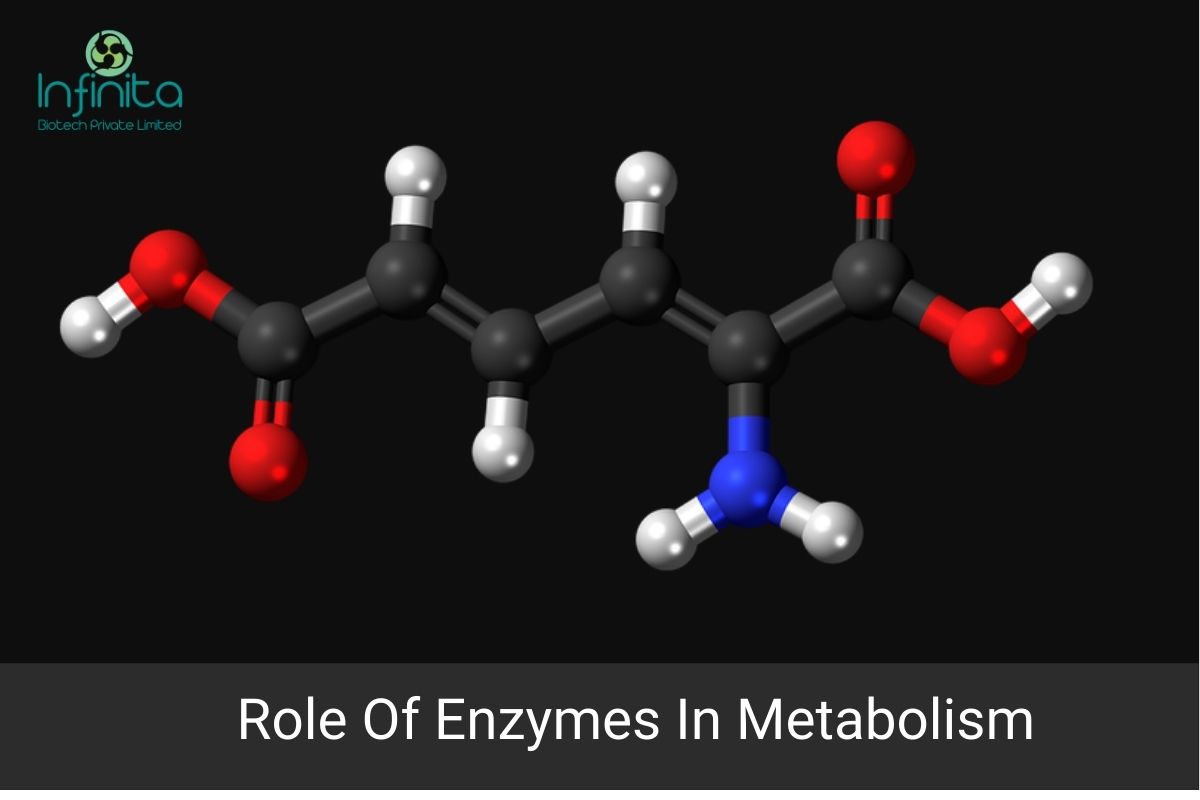
Role Of Enzymes In Metabolism
What Are The Role Of Enzymes In Metabolism?
Metabolism is a kind of chemical activity that happens between different types of cells. In this article, we will try to know about the role of enzymes in metabolism and how different metabolism enzymes work.
Metabolism is of two different kinds that include:
- Anabolism: In this process, all molecules follow the synthesis process to make bigger molecules
- Catabolism: in the process of catabolism, the larger molecules break into smaller molecules.
All chemical reactions inside the living cell need a catalyst that can help in increasing the rate of the chemical reaction. Enzymes inside our bodywork as a catalyst. Thus, enzymes also help in increasing and decreasing the metabolism process inside our body. The enzymes can change the chemical indie our cells, even though they do not change themselves.
Different types of chemical reactions may need a catalyst like an enzyme so that it can influence their rate of reaction. Glycolysis is the best example of a catabolic cellular process that happens inside our cells. Under the process of glycolysis, the glucose present in our cell breaks into Pyruvate. One of the most important instance examples of anabolic metabolism is the reaction between oxygen and hydrogen to form water molecules. In this anabolic process, small molecules combine and fuse to form big-sized molecules.
In addition to the metabolic benefits of enzymes, they are also beneficial for the storage as well as the release of energy. Enzymes are also useful in the course of reproduction as well as respiration in humans.
Working Of Enzymes
Different types of enzymes have the capability to promote different types of chemical reactions. The substrate is a type of compound on which the enzymes act. Enzymes work in an organized metabolic system called the metabolic pathway. Different types of biological processes and phenomena such as contraction of muscles in body parts and the transmission of nerve impulses need the help of enzymes. Products used in one metabolic pathway can work as a substrate for the other step in the pathway.
Enzyme Concentration Regulation And The Role Of Enzymes In Metabolism
Variation In The Transcription Of The Enzyme’s Gene
Different extracellular signals like the neurotransmitters and hormones may lead to transductions in the signal. It may also cause activation or the inhibition of the gene of a protein enzyme. All these modifications can lead to the recruitment of proteins to the DNA sequence that helps in regulating the transcription of the enzyme genes.
Degeneration Of The Messenger RNA For Enzyme
The amount of messenger DNA for different proteins can indirectly regulate the amount of protein synthesis. Even the small inhibitor RNAs derived from micro RNA molecules can tie-up to specific sequences in the mRNA of the targeted enzyme. This results in double-stranded RNA completed recruiting the enzymes. These enzymes are dicers, and they leave the complex with the impact of the reduction in the translation of protein enzyme from the mRNA.
Transnational Changes
Once all protein enzymes convert from the mRNA, it can even lead to different changes that can affect the levels of enzymes. Some proteins are also synthesized in their previous form. But this must be cleaved in a targeted manner by the protease for the activation of the enzyme. In some cases, proteins do not completely fold, and they also need to tie-up with other factors in the cell so that they can adapt in a catalytically active format. Every fully active enzyme can be proteolyzed fully by the proteasome. The proteasome is a complex that lies inside the lysosome in our cells.
Different processes discovery makes us aware that enzymes help in controlling the unpredictability of different types of metabolites pathways that are entirely made for different types of metabolic activities. This guarantees that the output of the metabolic pathway can meet the biological demand. In addition to this, it also ensures that the energy that is present in the cells in the form of ATP does not waste.
Enzymes are manageable by changing different activities of the pre-existing enzymes present in our body as well as by changing the number of enzymes.
Modification Of The Activity Of The Pre-Existing Enzyme
The simplest and the quickest way to modify the activity of an enzyme is by changing the functionality of the enzyme that is already present inside the cell.
Most common ways to regulate the activity of the enzyme include:
Substrate Availability
The substrate is a kind of molecule that is attached to the enzyme with the characteristics of affinity and the kinetic parameter called the Km. If the accumulation of the substrate inside the cell is more than Km, then the enzyme site will have substrate saturation. In this case, the enzyme will be hyperactive.
Product Inhibition
In a catalyzed reaction, the product of an enzyme is usually similar to the reactant that started the reaction. In this case, the product gets attachment with the activity site with lower levels of affinity. In conditions in which the product of the reaction is available in a higher concentration, it is important for the cell to not move towards more product synthesis. In this case, product inhibition can be closely seen. Likewise, it can be better for a cell if the end product at the entire pathway can be tied-up to the initial enzyme in the pathway.
Allosteric Regulation
All pathways in a metabolic process are in connection with each other. Thus, molecules that tie-up at the site of the target enzyme can regulate the target enzymes at the other sites as well. In fact, these molecules may be structurally different from those that tie-up at the active site. They do this by conformational changes that may either activate or hinder the activity of the target enzyme.
PH And Enzyme Confirmation
Even a minute modification in the PH can lead to different metabolic processes like respiration to modify the conformation of the enzyme and the activity of the enzyme. Changes in the initial phase are covalent. This means that it can result in the alternation of a delicate balance of force that may affect the structure of the protein.
PH And The Protonation Stage
Modification in the PH levels can also impact the protonation phase of different amino-acid changes. But, it does not lead to global or local confirmation of any protein. If the mechanism of the catalysis leads to active site nucleophiles, it can change the catalysis process.
Covalent Changes
Most proteins go through post-translational changes. These affect the activity of the enzyme in different locales as well as global shape modification. This can happen due to the promotion or due to inhibition of the binding interaction of substrates as well as the allosteric regulators. It can also happen due to the change in the location of the protein inside the cell.
How Can Enzymes Work As Catalysts?
To know details about the role of enzymes in the metabolism process, it is important to know how enzymes function as catalysts.
All chemical reactions inside the cell are not natural, and they don’t happen on their own. Thus, it is essential to understand how enzymes can function as catalysts. All types of chemical reactions need something called a catalyst so that the reaction can start. In different types of reactions, heat acts as a catalyst. But sometimes, heat energy is not efficient enough as it needs application in a controlled manner. Thus, different chemical reactions need enzymes so that it can bind with the reactant till the reaction gets complete. Enzymes never change themselves in any part of the chemical reaction.
Lock And Key Model
To know the role of metabolism enzymes, the lock and the key model can be helpful. As per this model, the enzymes do not get tied-up with the molecule. Instead, they have such a design that they can get tie-up with a particular type of molecule known as the substrate. The substrates form a groove, and the substrate and the enzyme work together like a lock and key.
One of the essential instances of the lock and key method is the working of sucrase. Sucrose contains a polypeptide chain, and it helps in tying up with the sucrose. Once the sucrase and the sucrose get tied together, they combine with water molecules to form glucose and fructose.
We are hopeful that this article will help you in understanding the role of enzymes in metabolism and everything about metabolism enzymes. Let us know if you want to get more details.
Related Articles
The Basics of Soil Stabilization: An Introduction
What is Soil Stabilization? Definition: Have you ever wondered how builders manage to create rock-solid foundations for structures, even on unstable grounds? That's where soil stabilization becomes critical. At its core, soil stabilization refers to the process of...
Bio Enzyme Uses and Their Applications

Role Of Enzymes In Metabolism
What Are The Role Of Enzymes In Metabolism?
Metabolism is a kind of chemical activity that happens between different types of cells. In this article, we will try to know about the role of enzymes in metabolism and how different metabolism enzymes work.
Metabolism is of two different kinds that include:
- Anabolism: In this process, all molecules follow the synthesis process to make bigger molecules
- Catabolism: in the process of catabolism, the larger molecules break into smaller molecules.
All chemical reactions inside the living cell need a catalyst that can help in increasing the rate of the chemical reaction. Enzymes inside our bodywork as a catalyst. Thus, enzymes also help in increasing and decreasing the metabolism process inside our body. The enzymes can change the chemical indie our cells, even though they do not change themselves.
Different types of chemical reactions may need a catalyst like an enzyme so that it can influence their rate of reaction. Glycolysis is the best example of a catabolic cellular process that happens inside our cells. Under the process of glycolysis, the glucose present in our cell breaks into Pyruvate. One of the most important instance examples of anabolic metabolism is the reaction between oxygen and hydrogen to form water molecules. In this anabolic process, small molecules combine and fuse to form big-sized molecules.
In addition to the metabolic benefits of enzymes, they are also beneficial for the storage as well as the release of energy. Enzymes are also useful in the course of reproduction as well as respiration in humans.
Working Of Enzymes
Different types of enzymes have the capability to promote different types of chemical reactions. The substrate is a type of compound on which the enzymes act. Enzymes work in an organized metabolic system called the metabolic pathway. Different types of biological processes and phenomena such as contraction of muscles in body parts and the transmission of nerve impulses need the help of enzymes. Products used in one metabolic pathway can work as a substrate for the other step in the pathway.
Enzyme Concentration Regulation And The Role Of Enzymes In Metabolism
Variation In The Transcription Of The Enzyme’s Gene
Different extracellular signals like the neurotransmitters and hormones may lead to transductions in the signal. It may also cause activation or the inhibition of the gene of a protein enzyme. All these modifications can lead to the recruitment of proteins to the DNA sequence that helps in regulating the transcription of the enzyme genes.
Degeneration Of The Messenger RNA For Enzyme
The amount of messenger DNA for different proteins can indirectly regulate the amount of protein synthesis. Even the small inhibitor RNAs derived from micro RNA molecules can tie-up to specific sequences in the mRNA of the targeted enzyme. This results in double-stranded RNA completed recruiting the enzymes. These enzymes are dicers, and they leave the complex with the impact of the reduction in the translation of protein enzyme from the mRNA.
Transnational Changes
Once all protein enzymes convert from the mRNA, it can even lead to different changes that can affect the levels of enzymes. Some proteins are also synthesized in their previous form. But this must be cleaved in a targeted manner by the protease for the activation of the enzyme. In some cases, proteins do not completely fold, and they also need to tie-up with other factors in the cell so that they can adapt in a catalytically active format. Every fully active enzyme can be proteolyzed fully by the proteasome. The proteasome is a complex that lies inside the lysosome in our cells.
Different processes discovery makes us aware that enzymes help in controlling the unpredictability of different types of metabolites pathways that are entirely made for different types of metabolic activities. This guarantees that the output of the metabolic pathway can meet the biological demand. In addition to this, it also ensures that the energy that is present in the cells in the form of ATP does not waste.
Enzymes are manageable by changing different activities of the pre-existing enzymes present in our body as well as by changing the number of enzymes.
Modification Of The Activity Of The Pre-Existing Enzyme
The simplest and the quickest way to modify the activity of an enzyme is by changing the functionality of the enzyme that is already present inside the cell.
Most common ways to regulate the activity of the enzyme include:
Substrate Availability
The substrate is a kind of molecule that is attached to the enzyme with the characteristics of affinity and the kinetic parameter called the Km. If the accumulation of the substrate inside the cell is more than Km, then the enzyme site will have substrate saturation. In this case, the enzyme will be hyperactive.
Product Inhibition
In a catalyzed reaction, the product of an enzyme is usually similar to the reactant that started the reaction. In this case, the product gets attachment with the activity site with lower levels of affinity. In conditions in which the product of the reaction is available in a higher concentration, it is important for the cell to not move towards more product synthesis. In this case, product inhibition can be closely seen. Likewise, it can be better for a cell if the end product at the entire pathway can be tied-up to the initial enzyme in the pathway.
Allosteric Regulation
All pathways in a metabolic process are in connection with each other. Thus, molecules that tie-up at the site of the target enzyme can regulate the target enzymes at the other sites as well. In fact, these molecules may be structurally different from those that tie-up at the active site. They do this by conformational changes that may either activate or hinder the activity of the target enzyme.
PH And Enzyme Confirmation
Even a minute modification in the PH can lead to different metabolic processes like respiration to modify the conformation of the enzyme and the activity of the enzyme. Changes in the initial phase are covalent. This means that it can result in the alternation of a delicate balance of force that may affect the structure of the protein.
PH And The Protonation Stage
Modification in the PH levels can also impact the protonation phase of different amino-acid changes. But, it does not lead to global or local confirmation of any protein. If the mechanism of the catalysis leads to active site nucleophiles, it can change the catalysis process.
Covalent Changes
Most proteins go through post-translational changes. These affect the activity of the enzyme in different locales as well as global shape modification. This can happen due to the promotion or due to inhibition of the binding interaction of substrates as well as the allosteric regulators. It can also happen due to the change in the location of the protein inside the cell.
How Can Enzymes Work As Catalysts?
To know details about the role of enzymes in the metabolism process, it is important to know how enzymes function as catalysts.
All chemical reactions inside the cell are not natural, and they don’t happen on their own. Thus, it is essential to understand how enzymes can function as catalysts. All types of chemical reactions need something called a catalyst so that the reaction can start. In different types of reactions, heat acts as a catalyst. But sometimes, heat energy is not efficient enough as it needs application in a controlled manner. Thus, different chemical reactions need enzymes so that it can bind with the reactant till the reaction gets complete. Enzymes never change themselves in any part of the chemical reaction.
Lock And Key Model
To know the role of metabolism enzymes, the lock and the key model can be helpful. As per this model, the enzymes do not get tied-up with the molecule. Instead, they have such a design that they can get tie-up with a particular type of molecule known as the substrate. The substrates form a groove, and the substrate and the enzyme work together like a lock and key.
One of the essential instances of the lock and key method is the working of sucrase. Sucrose contains a polypeptide chain, and it helps in tying up with the sucrose. Once the sucrase and the sucrose get tied together, they combine with water molecules to form glucose and fructose.
We are hopeful that this article will help you in understanding the role of enzymes in metabolism and everything about metabolism enzymes. Let us know if you want to get more details.
0 Comments
Submit a Comment
You must be logged in to post a comment.
CATEGORIES
- Agriculture Enzymes
- Animal Feed Enzymes
- Brewery Enzymes
- Cellulase Complex Enzymes For Cellulosic Ethanol
- Covid – 19
- Detergent Enzymes
- Disinfectants
- Distillery Enzymes
- Enzymes
- Enzymes for Biodiesel
- Enzymes For Ceramic Industry
- Enzymes for Cosmetics
- Enzymes for Crude Oil Spill Remediation
- Enzymes For Hydrolysis Of Gel Used In Crude Oil Extraction
- Enzymes for Malt
- Enzymes for soil stabilization
- Food and Beverage Enzymes
- Juice Extraction Enzymes For Wine
- Pharmaceutical Enzymes
- Pulp and Paper Enzymes
- Starch Processing Enzymes
- Sugar Processing Enzymes
- Textile Enzymes
- Wastewater Treatment Enzymes
The Basics of Soil Stabilization: An Introduction
What is Soil Stabilization? Definition: Have you ever wondered how builders manage to create rock-solid foundations for structures, even on unstable grounds? That's where soil stabilization becomes critical. At its core, soil stabilization refers to the process of...
Bio Enzyme Uses and Their Applications
Benefits of Eco Enzyme for Agriculture and Well-being
In today's world, where sustainable practices and holistic well-being are gaining prominence, the eco enzyme has emerged as a remarkable solution with numerous benefits for both agriculture and overall well-being. This powerful organic concoction offers a multitude of...




0 Comments